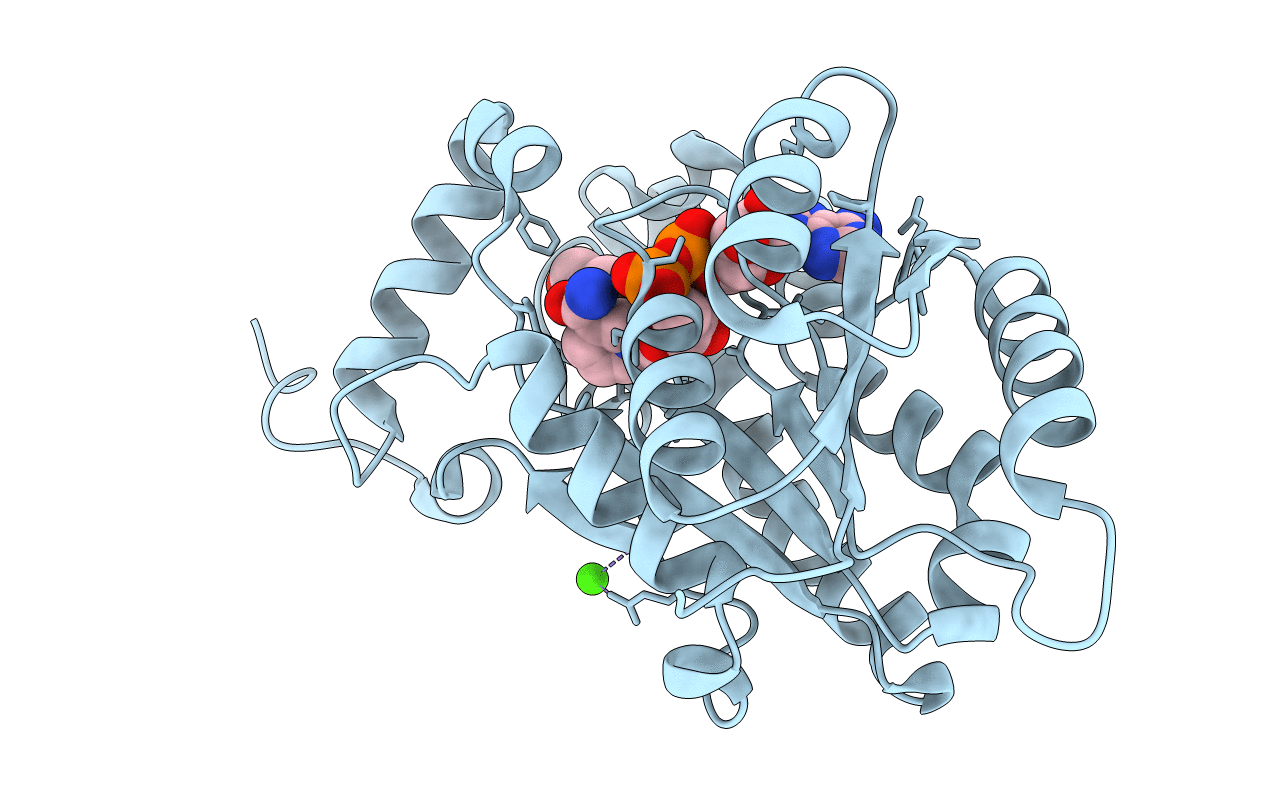
Deposition Date
2021-06-17
Release Date
2022-06-22
Last Version Date
2024-01-31
Entry Detail
PDB ID:
7F44
Keywords:
Title:
Crystal structure of Moraxella catarrhalis enoyl-ACP-reductase (FabI) in complex with the cofactor NAD
Biological Source:
Source Organism:
Moraxella catarrhalis (strain BBH18) (Taxon ID: 1236608)
Host Organism:
Method Details:
Experimental Method:
Resolution:
2.12 Å
R-Value Free:
0.25
R-Value Work:
0.19
R-Value Observed:
0.19
Space Group:
P 42 21 2


